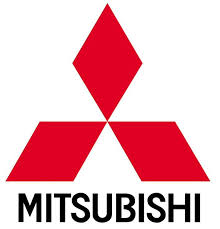Raider V6-3.7L SOHC (2006)

Hose/Line HVAC: Service Precautions
WARNINGS:
-
THE A/C SYSTEM CONTAINS REFRIGERANT UNDER HIGH PRESSURE. REPAIRS SHOULD ONLY BE PERFORMED BY
QUALIFIED SERVICE PERSONNEL. SEVERE PERSONAL INJURY OR DEATH MAY RESULT FROM IMPROPER SERVICE
PROCEDURES.
-
AVOID BREATHING THE REFRIGERANT AND REFRIGERANT OIL VAPOR OR MIST. EXPOSURE MAY IRRITATE THE
EYES, NOSE, AND/OR THROAT. WEAR EYE PROTECTION WHEN SERVICING THE A/C REFRIGERANT SYSTEM. SERIOUS
EYE INJURY CAN RESULT FROM DIRECT CONTACT WITH THE REFRIGERANT. IF EYE CONTACT OCCURS, SEEK
MEDICAL ATTENTION IMMEDIATELY.
-
DO NOT EXPOSE THE REFRIGERANT TO OPEN FLAME. POISONOUS GAS IS CREATED WHEN REFRIGERANT IS BURNED.
AN ELECTRONIC LEAK DETECTOR IS RECOMMENDED. SEVERE PERSONAL INJURY OR DEATH MAY RESULT FROM
IMPROPER SERVICE PROCEDURES.
-
IF ACCIDENTAL SYSTEM DISCHARGE OCCURS, VENTILATE THE WORK AREA BEFORE RESUMING SERVICE. LARGE
AMOUNTS OF REFRIGERANT RELEASED IN A CLOSED WORK AREA WILL DISPLACE THE OXYGEN AND CAUSE
SUFFOCATION AND DEATH.
-
THE EVAPORATION RATE OF R-134A REFRIGERANT AT AVERAGE TEMPERATURE AND ALTITUDE IS EXTREMELY
HIGH. AS A RESULT, ANYTHING THAT COMES IN CONTACT WITH THE REFRIGERANT WILL FREEZE. ALWAYS
PROTECT THE SKIN OR DELICATE OBJECTS FROM DIRECT CONTACT WITH THE REFRIGERANT.
-
THE R-134A SERVICE EQUIPMENT OR THE VEHICLE REFRIGERANT SYSTEM SHOULD NOT BE PRESSURE TESTED OR
LEAK TESTED WITH COMPRESSED AIR. SOME MIXTURES OF AIR AND R-134A HAVE BEEN SHOWN TO BE
COMBUSTIBLE AT ELEVATED PRESSURES. THESE MIXTURES ARE POTENTIALLY DANGEROUS, AND MAY RESULT IN
FIRE OR EXPLOSION CAUSING PROPERTY DAMAGE, PERSONAL INJURY OR DEATH.
-
THE ENGINE COOLING SYSTEM IS DESIGNED TO DEVELOP INTERNAL PRESSURES OF 97 TO 123 KILO-PASCALS (14 TO
18 POUNDS PER SQUARE INCH). DO NOT REMOVE OR LOOSEN THE COOLANT PRESSURE CAP, CYLINDER BLOCK
DRAIN PLUGS, RADIATOR DRAIN, RADIATOR HOSES, HEATER HOSES, OR HOSE CLAMPS WHILE THE ENGINE
COOLING SYSTEM IS HOT AND UNDER PRESSURE. ALLOW THE VEHICLE TO COOL FOR A MINIMUM OF 15 MINUTES
BEFORE OPENING THE COOLING SYSTEM FOR SERVICE. FAILURE TO OBSERVE THIS WARNING CAN RESULT IN
SERIOUS BURNS FROM THE HEATED ENGINE COOLANT
CAUTIONS:
-
Never add R-12 to a refrigerant system designed to use R-134a. Do not use R-12 equipment or parts on a R-134a A/C system. These refrigerants
are not compatible and damage to the A/C system will result.
-
Never use R-12 refrigerant oil in a A/C system designed to use R-134a refrigerant oil. These refrigerant oils are not compatible and damage to the
A/C system will result.
-
The use of A/C system sealers may result in damage to A/C refrigerant recovery/evacuation/ recharging equipment and/or A/C system. Many
federal, state/provincial and local regulations prohibit the recharge of A/C systems with known leaks. Mitsubishi recommends the detection of A/
C system leaks through the use of approved leak detectors and fluorescent leak detection dyes. Vehicles found with A/C system sealers should be
treated as contaminated and replacement of the entire A/C refrigerant system is recommended. A/C systems found to be contaminated with A/C
system sealers, A/C stop-leak products or seal conditioners voids the warranty for the A/ C system.
-
Recover the refrigerant before opening any fitting or connection. Open the fittings with caution, even after the system has been discharged. Never
open or loosen a connection before recovering the refrigerant.
-
If equipped, do not remove the secondary retention clip from any spring-lock coupler connection while the refrigerant system is under pressure.
Recover the refrigerant before removing the secondary retention clip. Open the fittings with caution, even after the system has been discharged.
Never open or loosen a connection before recovering the refrigerant.
-
The internal parts of the A/C system will remain stable as long as moisture-free refrigerant and refrigerant oil is used. Abnormal amounts of dirt,
moisture or air can upset the chemical stability. This may cause operational troubles or even serious damage if present in more than very small
quantities. Before disconnecting a component, clean the outside of the fittings thoroughly to prevent contamination from entering the refrigerant
system. Keep service tools and the work area clean. Do not open the refrigerant system or uncap a replacement component until you are ready to
service the system. Immediately after disconnecting a component from the refrigerant system, seal the open fittings with a cap or plug. This will
prevent contamination from entering the A/C system.
-
Refrigerant oil will absorb moisture from the atmosphere if left uncapped. Do not open a container of refrigerant oil until you are ready to use it.
Replace the cap on the oil container immediately after using. Store refrigerant oil only in a clean, airtight, and moisture-free container.
-
Do not overcharge the refrigerant system. Overcharging will cause excessive compressor head pressure and can cause compressor noise and A/C
system failure.
